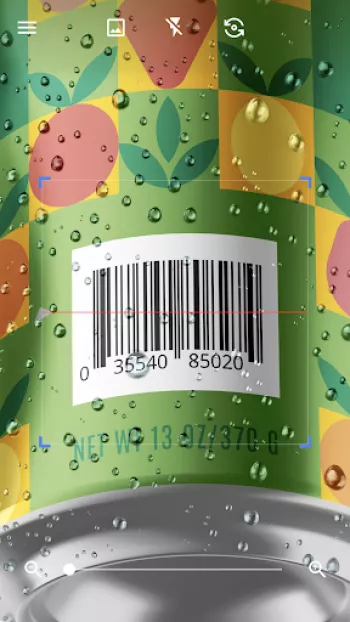Apps Home

QR & Barcode Scanner
Understanding Document Scanning and Analysis
Document scanning and analysis is a pivotal component in the modern digital landscape. The process fundamentally begins with the conversion of physical documents into digital formats through the use of advanced scanning technologies. This transformation is not merely about creating digital images of paper documents but also entails capturing every detail to ensure accuracy and fidelity. Technologies such as Optical Character Recognition (OCR) play a crucial role by facilitating the conversion of text within a scanned document image into machine-readable text. This technology is particularly useful in digitizing printed texts so they can be electronically edited, searched, stored efficiently, and displayed online. OCR is essential for processing invoices, receipts, business cards, and any document where a printed medium is converted into digital form for better usability and accessibility. The power of OCR comes from its ability to interpret varied fonts and text layouts while maintaining high accuracy levels, which is indispensable in today's fast-paced digital economy. Practical applications include making archives and libraries more accessible and searchable, supporting the visually impaired, or simply improving workplace efficiency by minimizing paper use and making documents easier to store, search, and retrieve. The very essence of document scanning transcends merely the conversion of documents; it incorporates the analytical aspect, which leverages machine learning algorithms to automate the extraction and categorization of data. For example, a scanned business card could automatically integrate into a contact management system, extracting name, phone number, and email address. This kind of functionality demonstrates how document scanning has evolved from a simple start in digitization to a sophisticated gateway for data analysis and extraction, empowering organizations to optimize workflows and maintain their competitive edge.
State-of-the-Art Multifunctionality in Mobile Applications
Mobile applications transforming smartphones into multifunction document scanners have unleashed new possibilities for personal and professional productivity. One of the most compelling aspects is their ability to combine multiple scanning features into a single app, thus eliminating the need for different applications for QR scanning, barcode reading, and document scanning. Consider the Android application that serves as a comprehensive QR and barcode scanning tool; it integrates seamlessly with these devices, allowing users instant access to these features wherever they are. The practical utility extends further with the option to scan various types of content, from URL links to Wi-Fi credentials, and even business card information directly into contact lists. This dual capability essentially puts a high-powered scanner and a pocket-friendly database generator in the hands of users. For example, when attending a conference, one can scan QR codes on brochures or presentations to quickly access digital content or use barcode scanning to manage inventory directly from one's device, significantly enhancing speed and productivity without cumbersome equipment. The real magic lies in these apps' simple user interface, masking an underlying complexity that includes sophisticated data algorithms capable of decoding and cataloging information instantaneously. Moreover, enabling functions like sharing scanned data across different platforms directly from the app, exporting to different file types, or using batch scanning modes to process multiple items at once are testaments to the comprehensive nature of these applications. As organizations and end-users look for efficiency, the transformation of regular mobile devices into robust, multifunction scanning units signals a significant step forward in merging digital data management with everyday tools, shaping a future where information handling is streamlined and effortlessly integrated into mobile technology.
Technical Insights into QR and Barcode Scanning
The technical ecosystem surrounding QR and barcode scanning is incredibly dynamic and requires a nuanced understanding of how these technologies operate. At a fundamental level, QR (Quick Response) codes and barcodes are both methods of encoding data visually, allowing machines to read them through optical scanning devices. QR codes, distinct in their square shape with complex patterns, can hold significantly more data than traditional barcodes, which usually contain information in numeric or alphanumeric formats spread across lines. This data capacity difference indicates that QR codes can encapsulate diverse information – URLs, text snippets, geolocation, and more – suiting them perfectly for marketing, logistics, and product information dissemination. Barcode scanning, often seen in retail and logistics, is indispensable for item identification and inventory management. From a technical standpoint, scanners use camera-based detection and sophisticated algorithms to interpret the data encoded within these visuals. These applications employ technologies such as image processing to detect the edges and patterns of codes, while data decoding technologies analyze the sequences within these patterns. Advanced features may include ambient light adjustment and image stabilization to ensure data is captured correctly even in suboptimal conditions. What sets modern scanning apps apart is their ability to also generate QR codes, allowing businesses to distribute their data efficiently or individuals to encode personal information like Wi-Fi passwords. The seamless communication between device hardware and app software, through APIs and integrated development environments (IDEs), lays the groundwork for a robust user experience. Users expect immediate scanning and reliable data interpretation using OCR and machine learning to refine these technologies further, ensuring that QR and barcode scanning are not only accurate but also fast and user-friendly.
Leveraging Scanning Technology in Everyday Life
In everyday life, the use of scanning technology through mobile devices has simplified many routine tasks, streamlining processes that previously required cumbersome equipment or time-intensive manual entry. This revolution in information access and data management is best observed in several practical applications – consider the retail environment, where quick barcode scans allow for immediate access to product details, price checks, and inventory control. Such expedience minimizes wait times and enhances customer satisfaction. Mobile scanning technology offers similar conveniences in personal life – from scanning QR codes on restaurant menus to competing in scavenger hunts powered by QR-based clues, where each scan propels participants further in the game. Schools and educational settings have embraced QR code usage as well; students can scan codes in textbooks to access online resources, submit assignments, or even participate in interactive lessons that bring static content to life. Document scanning apps also foster productivity improvements by allowing employees to take their work outside conventional office spaces, where scanned documents sync seamlessly to cloud storage, facilitating immediate team collaboration irrespective of geographical boundaries. The use of QR codes for Wi-Fi password sharing demonstrates a convenient application of this technology, alleviating the need to remember or share sensitive information manually. In such scenarios, users simply scan a code and are connected without further input. As organizations and consumers continue to recognize these technologies' portability, versatility, and ease of use, the incorporation of document scanning and analysis into everyday activities grows more prevalent, offering a glimpse into a future where paperless and contactless interactions are not only possible but possess tangible advantages in efficiency, cost-saving, and environmental impact.
The Future of Mobile Document Scanning and Analysis
Looking ahead, the future of mobile document scanning and analysis is poised to advance with enhanced capabilities that blend artificial intelligence with everyday applications, ushering in an era of even smarter devices. Future iterations of scanning apps are expected to offer real-time translation, augmented reality integrations, and even more personalized experiences driven by user behavior learning algorithms. Emerging technologies such as blockchain could introduce unprecedented levels of security and verification, ensuring document authenticity and integrity post-scanning, which becomes increasingly pertinent as more sensitive documents are shared digitally. Additionally, the convergence of 5G technology will likely propel mobile scanning capabilities, offering rapid data processing and instantaneous multi-page scanning without any reduction in quality. Future apps will not only scan documents with visual recognition but might also cross-reference public and private databases, performing contextual data validation and enabling more informed user decisions instantly. Consider the scenario where a QR code on a product label could link directly to its entire supply chain, providing consumers with transparency about sourcing, sustainability, or allergens, prompted through a single scan. Moreover, the user interfaces will continue to evolve, aiming for maximum intuitiveness, further encouraging widespread adoption across demographics that are less traditionally tech-savvy. As the technology itself becomes more capable and widespread, the ability for VOC (voice of customer) feedback to directly inform new features will ensure that these tools remain relevant, incorporating needs-driven innovations. Interested users can begin exploring these transformative applications by securing a trusted scanning app for their respective devices; Download for Android, leading into a future where documents are not just data, but dynamic components of digital life.
Share Your Opinion
Your Email Will Not Be Published.
All Rights Reserved © Apps Home 2025
















































Raj
I just downloaded this app. Initially I had a negative reaction when I scanned a QR code. it prominently showed an ad in the middle and choosing Co...
A Google user
Downloaded at the moment I needed it. Developer must have known that to be something that happens often cause as soon as I opened the app it went s...
Sarman V
would you kindly reduce the ad's bad interference, wasting valuable time of interested user/s, disturbing heavily in scanning searching etc... It's...
A Google user
Works great. I haven't tried every code scanner. But I tried a lot that were nothing but problems. This one does as discribed. Ads are on the botto...
Kenny G
I have only used this QR & Barcode Scanner one time but it wasted no time in presenting the number I was looking for! Before I ever even got it in ...